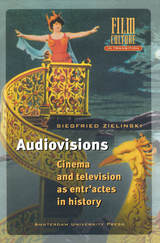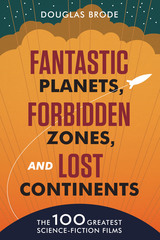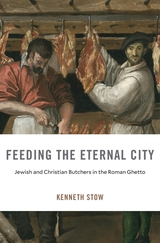![front cover of [...After the Media]](https://www.bibliovault.org/thumbs/978-1-937561-72-7-thumb.jpg)
The media are now redundant. In an overview of developments spanning the past seventy years, Siegfried Zielinski’s [ . . . After the Media] discusses how the means of technology-based communication assumed a systemic character and how theory, art, and criticism were operative in this process. Media-explicit thinking is contrasted with media-implicit thought. Points of contact with an arts perspective include a reinterpretation of the artist Nam June Paik and an introduction to the work of Jake and Dinos Chapman. The essay ends with two appeals. In an outline of a precise philology of exact things, Zielinski suggests possibilities of how things could proceed after the media. With a vade mecum against psychopathia medialis in the form of a manifesto, the book advocates for a distinction to be made between online existence and offline being.

The classic institutions for the mediation of film - cinema and television - are revealed to be no more than interludes in the broader history of the audiovisual media. This book interprets these changes not simply as a cultural loss but also as a challenge: the new audiovisions have to be confronted squarely to make strategic intervention possible.
Audiovisions provides a historical underpinning for this active approach. Spanning 100 years, from the end of the 19th to the end of the 20th century, it reconstructs the complex genesis of cinema and television as historically relative - and thus finite - cultural forms, focussing on the dynamics and tension in the interaction between the apparatus and its uses. The book is also a plea for "staying power" in studies of cultural technology and technological culture of film.
Essayistic in style, it dispenses with complicated cross references and, instead, is structured around distinct historical phases. Montages of images and text provide supplemental information, contrast, and comment.

In On Doubt, Vilém Flusser refines Martin Heidegger’s famous declaration that “language is the dwelling of Being.” For Flusser, “the word is the dwelling of being,” because in fact, in the beginning, there was the word.
On Doubt is a treatise on the human intellect, its relation to language, and the reality-forming discourses that subsequently emerge. For Flusser, the faith that the modern age places in Cartesian doubt plays a role similar to the one that faith in God played in previous eras—a faith that needs to be challenged. Descartes doubts the world through his proposition cogito ergo sum, but leaves doubt itself untouched as indubitable and imperious. His cogito ergo sum may have proved to the Western intellect that thoughts exist, but it did not prove the existence of that which thinks: one can eliminate thinking and yet continue being.
Therefore, should we not doubt doubt itself? Should we not try to go beyond this last step of Cartesian doubt and look for a new faith? The twentieth century has seen many attempts to defeat Cartesian doubt, however, this doubt of doubt has instead generated a complete loss of faith, which the West experiences as existential nihilism. Hence, the emergent emptying of values that results from such extreme doubt. Everything loses its meaning. Can this climate be overcome? Will the West survive the modern age?
READERS
Browse our collection.
PUBLISHERS
See BiblioVault's publisher services.
STUDENT SERVICES
Files for college accessibility offices.
UChicago Accessibility Resources
home | accessibility | search | about | contact us
BiblioVault ® 2001 - 2024
The University of Chicago Press









